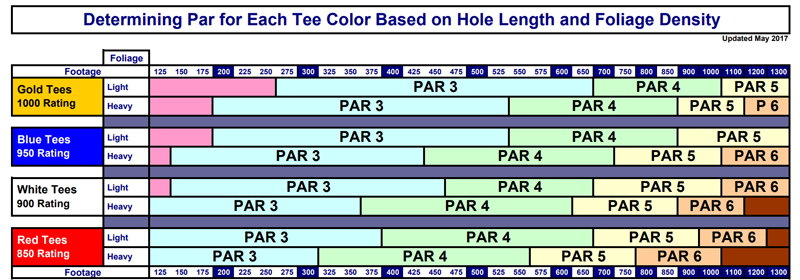I never disagreed with you on hole 13.
IMO "(Birdie) or Deuce or Die" or the "ones you got to get" might have a higher fear factor pressure on players than a "tough par" where you might be more relaxed if everyone is getting or settling for par, and possibly create more tension and drama for the viewers. I think it really depends on the hole itself, not the par. Just because a player expects to birdie, doesn't guarantee it.
How would Par indicate test of skill?
I abbreviated your post; the part I took out had some good thoughts.
While the words you said didn't outright disagree with me, they communicated that you disagreed with me. When someone says "I think X" and someone else responds, "But you don't think Y," that comes across as disagreement, whether you meant it or not.
I agree that there are some good ways to challenge players psychologically, and that "deuce or die" golf does that. By "Duece or die" I assume you mean holes that average well under par (or something similar to that), regardless of whether it's a par 3, 4, or 5. I'm going to call that "Birde or die." If so, then I have two thoughts for doing that better than DG currently does.
First, far too many of the holes employ this method of psychologically scaring players. In round 3, 8 of the holes averaged at least .2 under par, which means the best players thought of it as "birdie or die." There were some par 4s that did this as well, some of which players took a 2 (eagle) on. Some of these could have been a par 3. Making them a par 3 would create the same tense situation from from a different viewpoint: players aren't thinking "birdie or die," they are thinking "par or die". The course design could also potentially change to account for this, where there's a local route that provides a better change at birdie (and at bogey!). What I'm getting at is that the same method of psychologically scaring players gets old when that's the main one used.
Second, there are many other, better ways of psychologically scaring players. What about having a par 3 with a very small gap to hit at 200 feet, but the hole is another 100' plus behind the gap, and there's no other way through. I'm thinking hole 12 at Belton, but with a smaller gap and pulling the gap closer to the tee (and one that you can't go over practically). I don't mean making it stupidly small, but definitely small enough to where you see some pros lay up to it. Golf also has has a school of design called "heroic," where a course builds up to a shot where you have to be heroic to go for it. Either you go for it and fail, go for it and succeed, or don't go for it and you feel like you've failed. Usually these involve some sort of long water carry. Laying up means you're aiming for half the distance. These are two simple examples of holes we rarely see on tour, and if you think these are impractical, there are tons of others.
These two ideas together show that we have other ways to psychologically affect players and we aren't using them.
Also, I wasn't saying so much that par indicates a test of skill, but that it's a good gauge for how course designers can measure themselves. We can't set par in terms of decimals (I mean, we could but no one wants that), designers can use par to measure whether they achieved what they set out to do. The guy that designed hole 13 at Belton and said it was a par 5 (I'm assuming it was the same person/group of people) didn't achieve what they intended to in their design. This allows designers to go back to the drawing board and get better. Hole 13 is an obvious example, but there are many holes that aren't as obvious. What if someone makes a birdie or die hole only to find out that it's easier than expected, and is a pointless hole? A designer should learn from that.
Also, I realize that I'm sort of conflating par and average here. It's difficult to separate them without just rambling on and on, and I've already done that somewhat.


